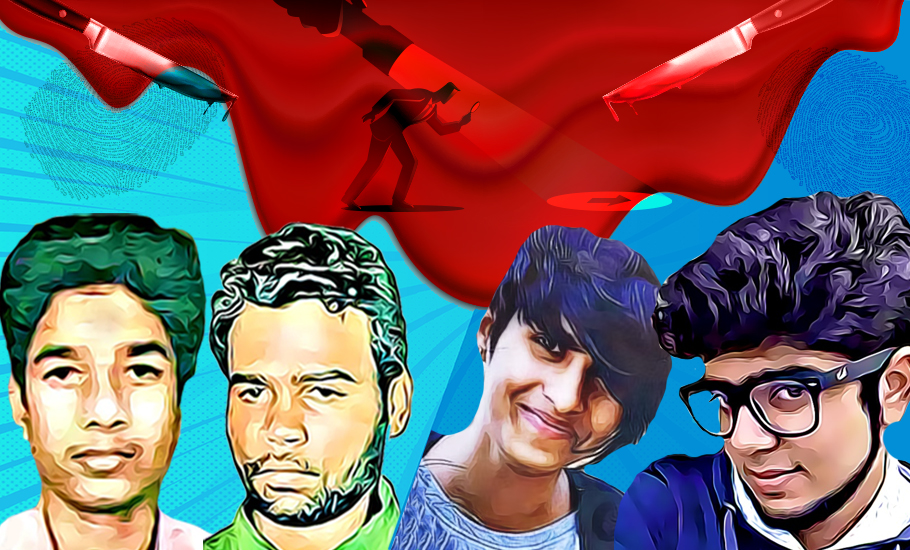
Navarasu murder in 1996, and its eerie resemblance to Shraddha case
The body of medical student Navarasu was cut into pieces and disposed of in different parts of TN, and it took nearly 15 years for the guilty to be punished; will Shraddha murder case go the same route?

The gory murder of 26-year-old Shraddha Walkar in Delhi bears eerie similarities with the murder of medical student Navarasu in Tamil Nadu in the 1990s. Shraddha was allegedly murdered after a confrontation, when her live-in partner Aftab Amin Poonawala refused to marry her. Aftab is alleged to have cut her body into 35 pieces and disposed of them in a forest nearby.
Nearly three decades ago, a similar fate befell Navarasu, a student of Raja Muthiah Medical College, Annamalai University. He was found to have been killed by his senior John David, in a case of ragging. Navarasu’s fault? He had refused to complete John David’s academic assignments. This led to a conflict inside a hostel room and Navarasu was attacked, leading to his death.
Violent attack
David, in a bid to wipe out all traces of his violent attack, dismembered Navarasu’s body and cleaned the blood stains. Doctors performing the post-mortem confirmed that a knife was used to dismember the body with the precision of a medical practitioner.
Also read: Shraddha murder: Senior advocate says fixing liability on Aftab will be hard
While Shraddha’s killing came to light after six months, Navarasu’s death could be confirmed only after a lengthy process to trace his body parts across Tamil Nadu, followed by DNA tests.
Navarasu went missing on November 6, 1996. His father K Ponnuswamy filed a formal missing complaint on November 10 since he didn’t turn up for Diwali celebrations at his Chennai house. Interestingly, on the same day, a torso was found in the city’s Pattinapakkam area.
Police investigation following Navarasu’s father’s complaint led them to David, who surrendered before a judicial magistrate. David was sent to police custody and on November 19 he confessed to the murder. He told the police he had disposed of the severed head in the boat canal within the university campus. On November 21, limbs of a human body were found from Marakkanam.
Watch: Shraddha murder: Aftab’s behaviour was normal, says neighbour
But these were not enough for the police to make a strong case as they had to depend too much on circumstantial evidence and the confession of the accused. There were no eyewitnesses and the hostel room in which Navarasu was killed was wiped clean with no trace of body tissues or any other evidence. The police had to depend on the fact that Navarasu went missing after last seen with David. Also, a roommate of David informed the police of foul odour, which he brushed aside as biryani gone bad.
High Court let David go
A lower court awarded David a life term for the murder. However, in 2001, the Madras High Court reversed the ruling, saying it relied almost entirely on circumstantial evidence. Navarasu’s father Ponnuswamy then spent a decade trying to get justice for his son.
David was working as a BPO employee when the Supreme Court again reversed the Madras High Court decision and pronounced a life sentence for him, in 2011.
In March 2022, David approached the Madras HC for a remission of his life sentence, with his advocates citing precedents and “a good conduct” certificate by jail authorities. But the HC dismissed the petition saying remission is the prerogative of the state government.
Watch | Shraddha-Aftab case: How to handle intimate partner violence
What this goes on to suggest is that pinning down evidence is rather tough when the body is dismembered and scattered over a wide geography. The Shraddha case, too, might go down a slippery slope for the prosecution. Especially since the murder was reportedly executed six months back and the accused allegedly erased most of the evidence. This would make the police rely to a great degree on the accused’s confession. DNA tests may also prove a challenge for the same reasons.
Pointers from SC judgement
The Supreme Court verdict confirming life term for David provides several pointers towards getting justice for Shraddha. Especially since David got a 10-year reprieve from the Madras HC, which found the circumstantial evidence not enough to prove him guilty.
Also read: Shraddha murder case: Accused was inspired by Dexter, an American crime drama
The Supreme Court made the following observations in the Navarasu murder case: “Prosecution has established its case on the basis of strong and cogent circumstantial evidence.” The apex court dismissed the fact that no blood stains or traces were found in the hostel in which Navarasu was murdered. “Minor loopholes and irregularities in the investigation process cannot form the crux of the case,” observed Justice Dalveer Bhandari and Mukundakam Sharma of the apex court.
But will the same criteria be applied to the horrific killing of Shraddha? Only time will tell.

